Language: English | Cymraeg
Severn INNS – The Severn Estuary
The Severn Estuary is a dynamic and unique environment that supports large urban settlements, a wide range of industry, heritage and recreational interests, as well as important habitats and species.
The Severn Estuary European Marine Site
The Severn Estuary has a number of designations that give it protected site status. It is a Special Area of Conservation for its habitats and migratory fish species, a Special Protection Area for its wildfowl and wading birds, and a Ramsar for its wetlands. Collectively, these designations are known as a European Marine Site because the habitats and species that the estuary supports are important on a European scale. The Severn Estuary also has a number of Sites of Special Scientific Interest.
The Severn Estuary has to be managed collectively and sensitively to ensure that the special habitats and species are not damaged. This includes the creation of biosecurity measures to protect the site from the impact of invasive non-native species. The Association of Severn Estuary Relevant Authorities (ASERA) manages the site collectively under the Severn Estuary European Marine Site Management Scheme and has been a key partner in the compilation of this biosecurity plan. The plan will be implemented by ASERA and the Severn Estuary Partnership with support from Natural Resources Wales, Natural England and other key partners.
What are Invasive and Non-Native Species?
Over 2,000 plants and animals have been introduced to Britain from all over the world by people. These are known as non-native species. Most are harmless, but around 10-15% spread and become invasive non-native species which harm wildlife and the environment, are costly to the economy and can even impact on our health and way of life.
Native vs Non-Native vs Invasive
Native Species:
- A species that originated and evolved in its current surrounding habitat
- Usually causes no harm but can be a nuisance under certain conditions
Non-Native Species:
- A non-native species (NNS) is a species that has been introduced into the country by human intervention (either deliberately or accidentally) since the end of the last ice age (approximately ten thousand years ago).
- No noticeable negative ecological and/or socio-economic effects on receiving ecosystem
- It has not evolved here but does not cause a problem
Invasive non-native species:
- Invasive non-native species (INNS), or invasive alien species, are those that are introduced, intentionally or unintentionally, outside of their natural geographic range, causing environmental, social and/or economic impacts.
- Approx. 10-15% of non-natives are harmful
- A non-native species that causes ecological and/or socio-economic harm
- It has not evolved here and causes a problem
What are the impacts of invasive non-native species?
Ecological & Environmental:
- Decrease biodiversity
- Predation on natives
- Alter gene pool through hybridisation
- Competition with native species
- Food and space
- Habitat alteration
- Ecosystem engineers
- Effects on habitat restoration efforts
- e.g. seagrass and oyster bed restoration
- Introduction of new diseases and parasites
Economic & Social:
- Blockage of pipes and other public utilities
- Increase of flood risk through destabilisation of riverbanks
- Impact on tourism & recreation through the fouling of boats
- Mortality of fisheries and aquaculture stocks through smothering and competition
- Cost to UK economy is estimated to be £4 billion per year
Species of concern for the Severn Estuary
Chinese mitten crab (Eriocheir sinensis)
- Native to China (Yellow Sea)
- First recorded in UK in 1935
- Adults live in freshwater and return to the sea to breed, die after mating
- Burrowing destabilises riverbanks
- Damage fishing nets and steal bait
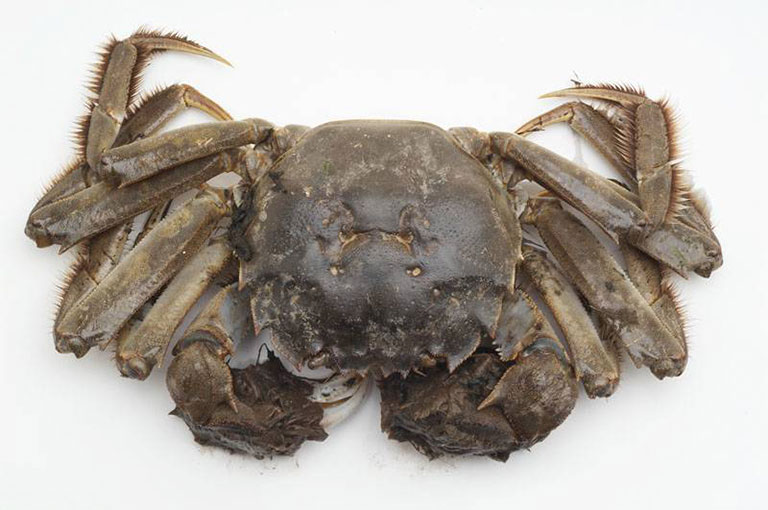
(Photo credit GB Non-Native Species Secretariat)
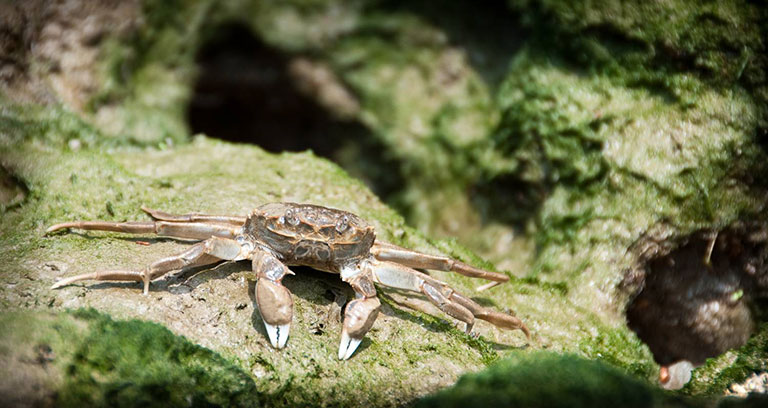
(Photo credit GB Non-Native Species Secretariat)
Trumpet tube worm (Ficopomatus enigmaticus)
- Native to Indo-Pacific
- Biofouling of boat hulls, marina equipment, infrastructure
- Nuisance in ports and marinas
- Clogs pipes and blocks tide-gates
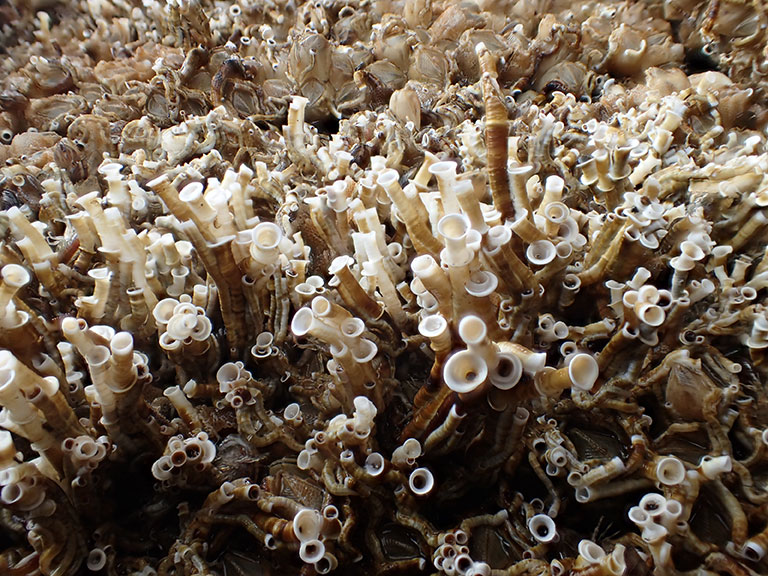
(Photo credit Paul Brazier, Natural Resources Wales)
Pacific oyster (Magallana gigas)
- Native to Japan and NE Asia
- Introduced from Canada in 1960s for aquaculture. First wild record 1965
- Can form dense aggregations in intertidal and shallow subtidal, altering substrate
- Can alter rocky shore community composition
- Can negatively impact native oysters
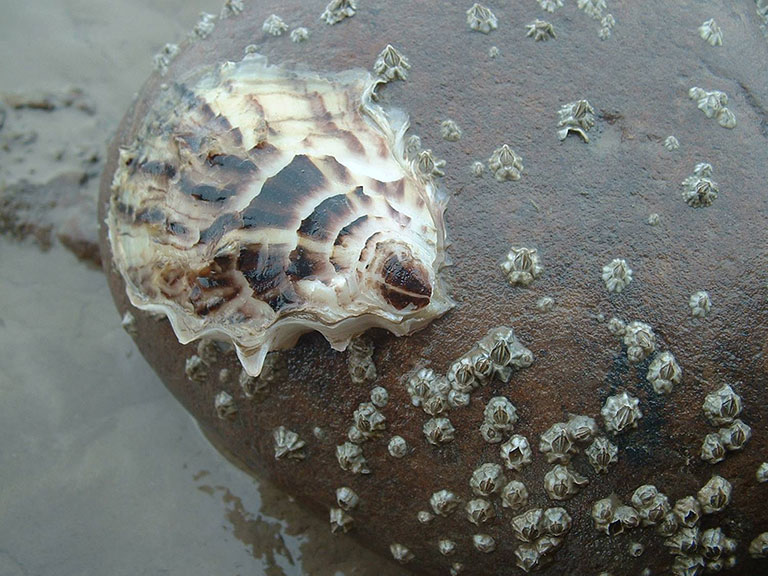
(Photo credit GB Non-Native Species Secretariat)
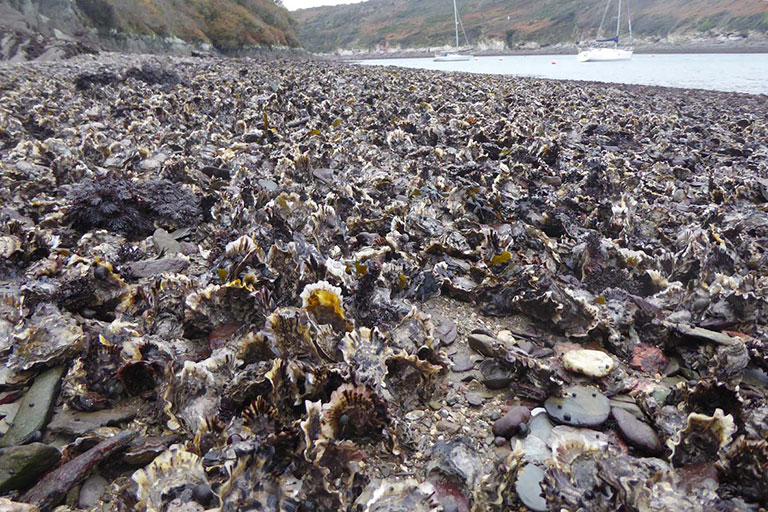
(Photo credit J Bishop, Marine Biological Association)
- Native to Japan
- Outcompetes native seaweeds, particularly in rock pools
- Fouls fishing gear
- Blocks intake pipes
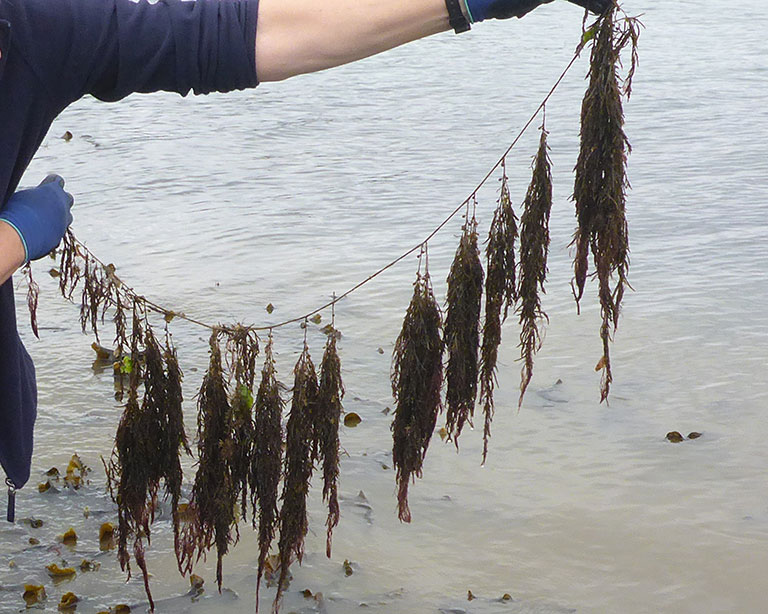
(Photo credit John Bishop, Marine Biological Association (All))
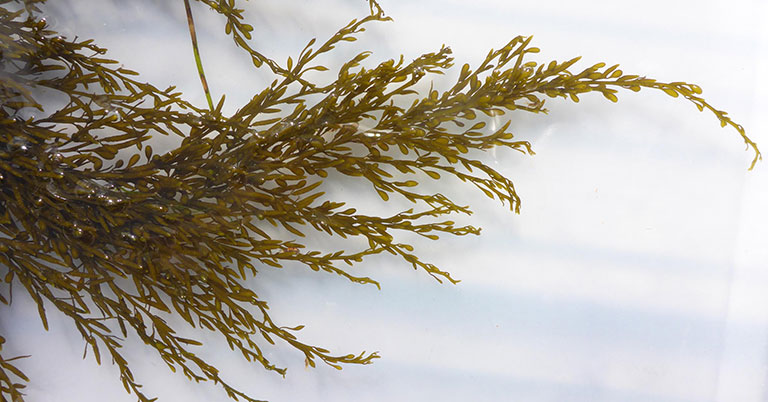
(Photo credit John Bishop, Marine Biological Association (All))
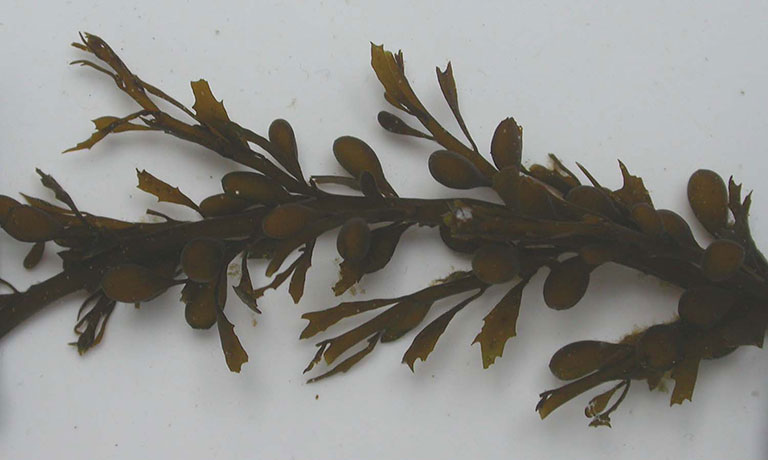
(Photo credit John Bishop, Marine Biological Association (All))
Downloadable ID guides for marine invasive non-native species in English and Welsh language
Horizon Species for the Severn Estuary
Horizon species = a species that is not currently established in a region but is likely to invade in the future.
Carpet sea squirt (Didemnum vexillum)
- Horizon species for the Severn
- Native to Japan
- Smothers native flora and fauna
- Can grow over protected species such as seagrass*
- Fouls infrastructure, fishing, shellfishery and aquaculture equipment, vessel hulls

(Photo credit Joe Ironside)
American Lobster (Homarus americanus)
- Horizon species for the Severn
- Currently uncommon in GB waters
- Very difficult to identify
- Impact on native lobster through competition, interbreeding and by spreading disease
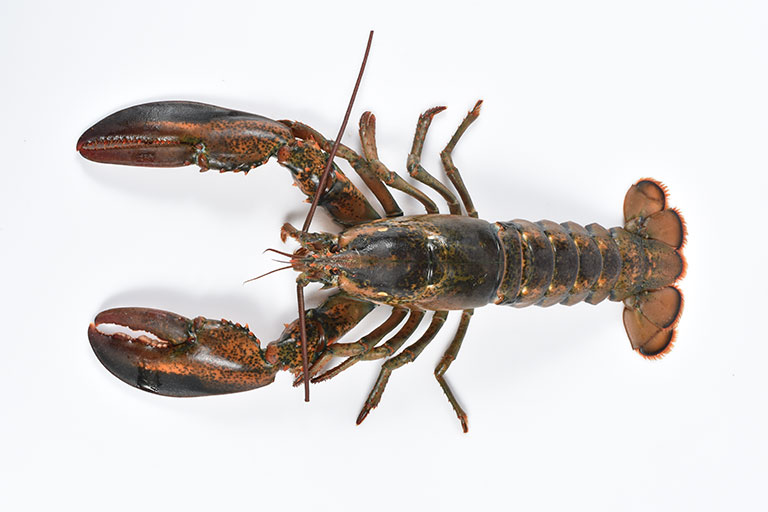
(Photo credit Cefas)
 Severn Estuary Partnership
Severn Estuary Partnership